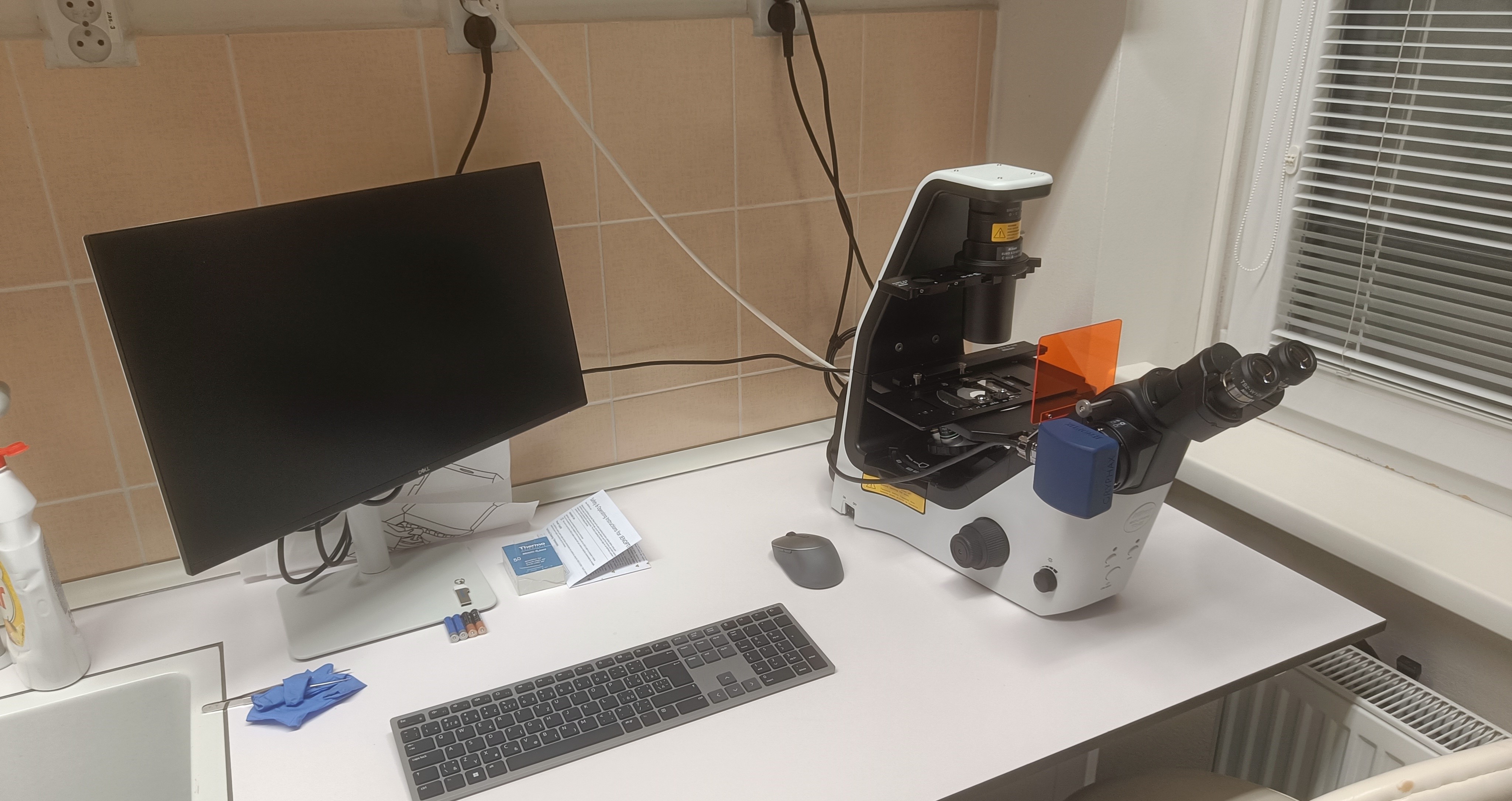Our Lab Equipment
Agilent Cary Eclipse and FluoroMax®-4 are compact spectrofluorometers with high sensitivity, enabling us to perform fluorescence investigations of fluorophores. It has unique photon counting and all reflective optics enabling characterization of sample components. Possible applications go far beyond the fluorescence spectra of studied proteins and other biomolecules. With additional accessories, absolute quantum yields measurement, polarization, or absorbance/transmittance can be obtained.
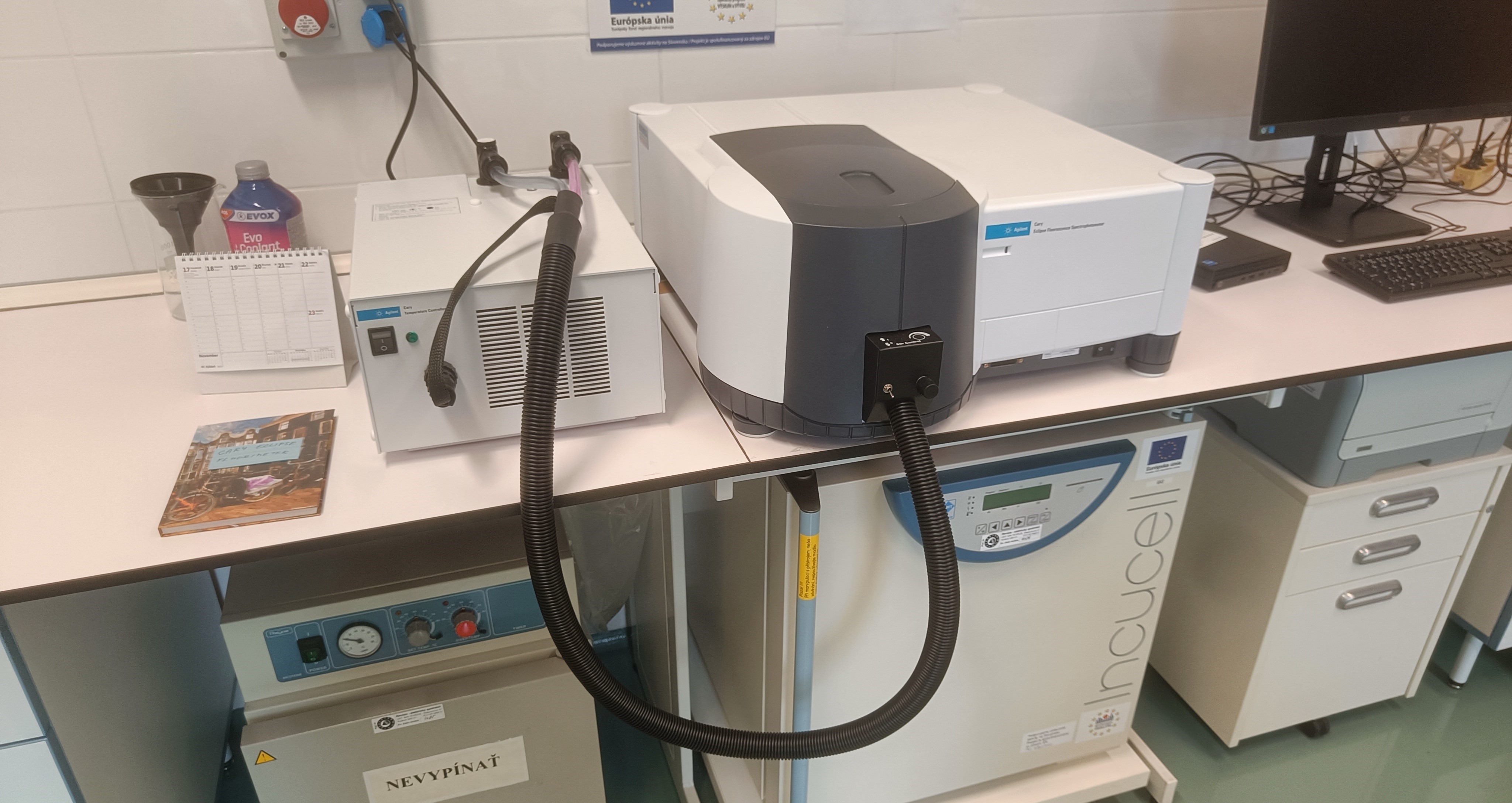



The CLARIOstar is a multifunctional microplate reader suitable for a wide range of applications, e. g. real-time cell-based assays, fast kinetics, enzymatic reactions, metabolism, etc. CLARIOstar is a multi-mode reader able to perform measurements in several detection modes, such as fluorescence intensity (including FRET - fluorescence resonance energy transfer), polarization, time-resolved fluorescence, UV-VIS absorbance spectra, luminescence, and TR-FRET (time-resolved FRET).
Multifunctional plate reader Synergy MX BioTek is a multi-mode reader capable of fluorescence, absorbance, luminescence, and FRET (10 nm between donor and acceptor) measurements. It can be utilized to measure the structural properties of biomacromolecules, aggregation, and dynamic activities of biological molecules. It is possible to measure whole spectra, not only values at defined wavelengths. Measurements can be carried out in a cuvette or plates - nanodrop - using small volumes (6 μl). According to our research interest, we perform amyloid aggregation studies of globular and intrinsically disordered proteins and quantify compounds and nanoparticles' inhibitory effects.
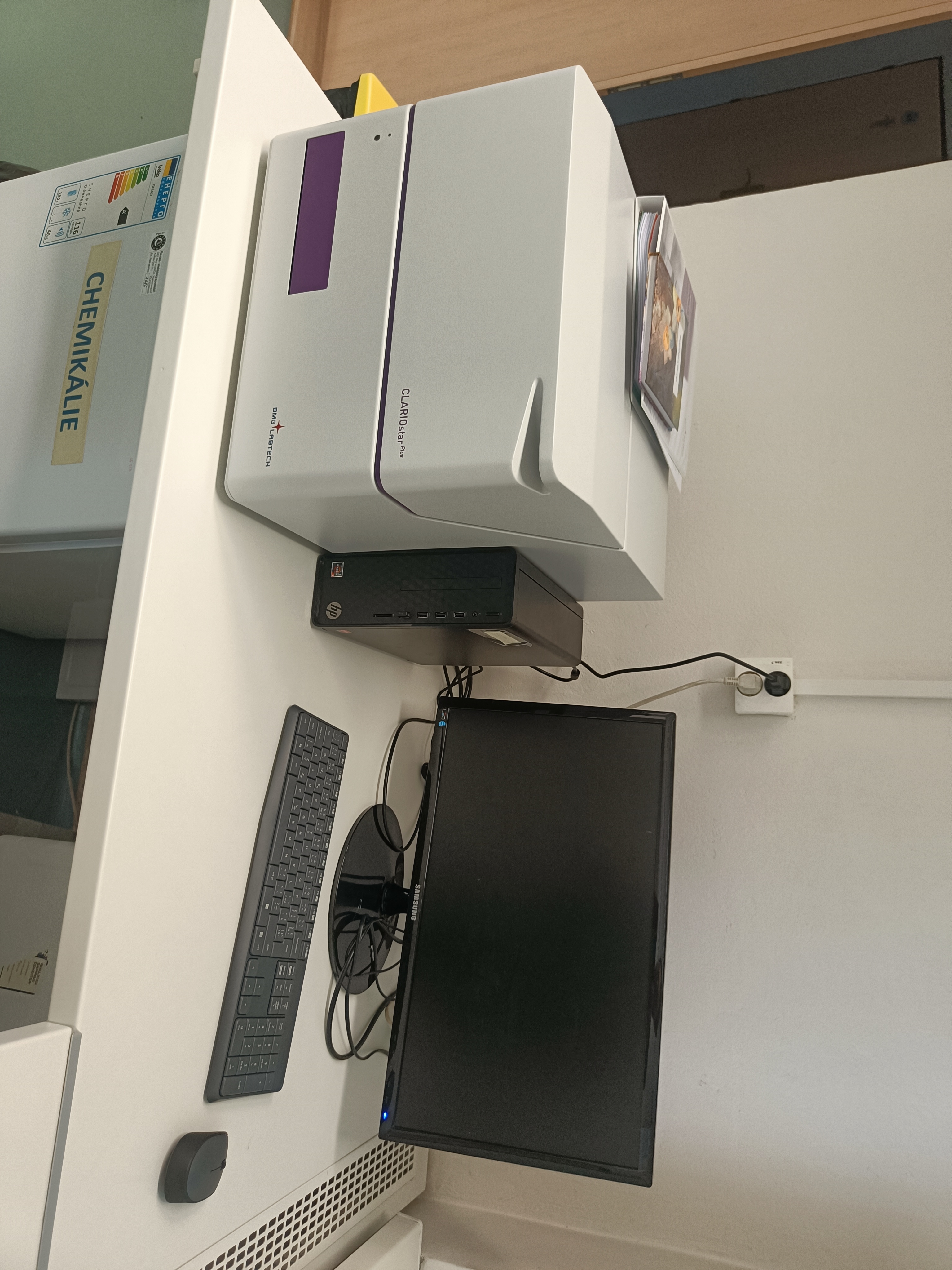



Amyloid aggregation of proteins yields amyloid fibrils with a prevalent β-sheet secondary structure. Differences in the absorption of right-handed and left-handed polarized light can be observed in proteins - optically active molecules. Circular dichroism (CD) spectrometry provides us with necessary information about the content of proteins' secondary structure components. Additionaly, valuable information about the tertiary structure and conformational changes of proteins and nucleic acids can be obtained. Magnetic circular dichroism (MCD) measurements are also available.


MicroCal iTC200 is a biophysical instrument used to determine thermodynamic parameters (binding affinity, enthalpy, entropy). It allows us to measure interactions between biomacromolecules in a solution without direct labeling. A wide range of molecules suitable for the interaction studies include biomolecules, e.g., lipids, proteins, nucleic acids, enzymes, antibodies, or other small molecules.
MicroCal-VP-DSC is another type of calorimetry able to measure thermodynamic parameters (melting temperature, enthalpy, entropy, Gibbs free energy, heat capacity) to characterize stability and dynamics of conformational transitions of proteins, nucleic acids, lipids, and its complexes in solutions.
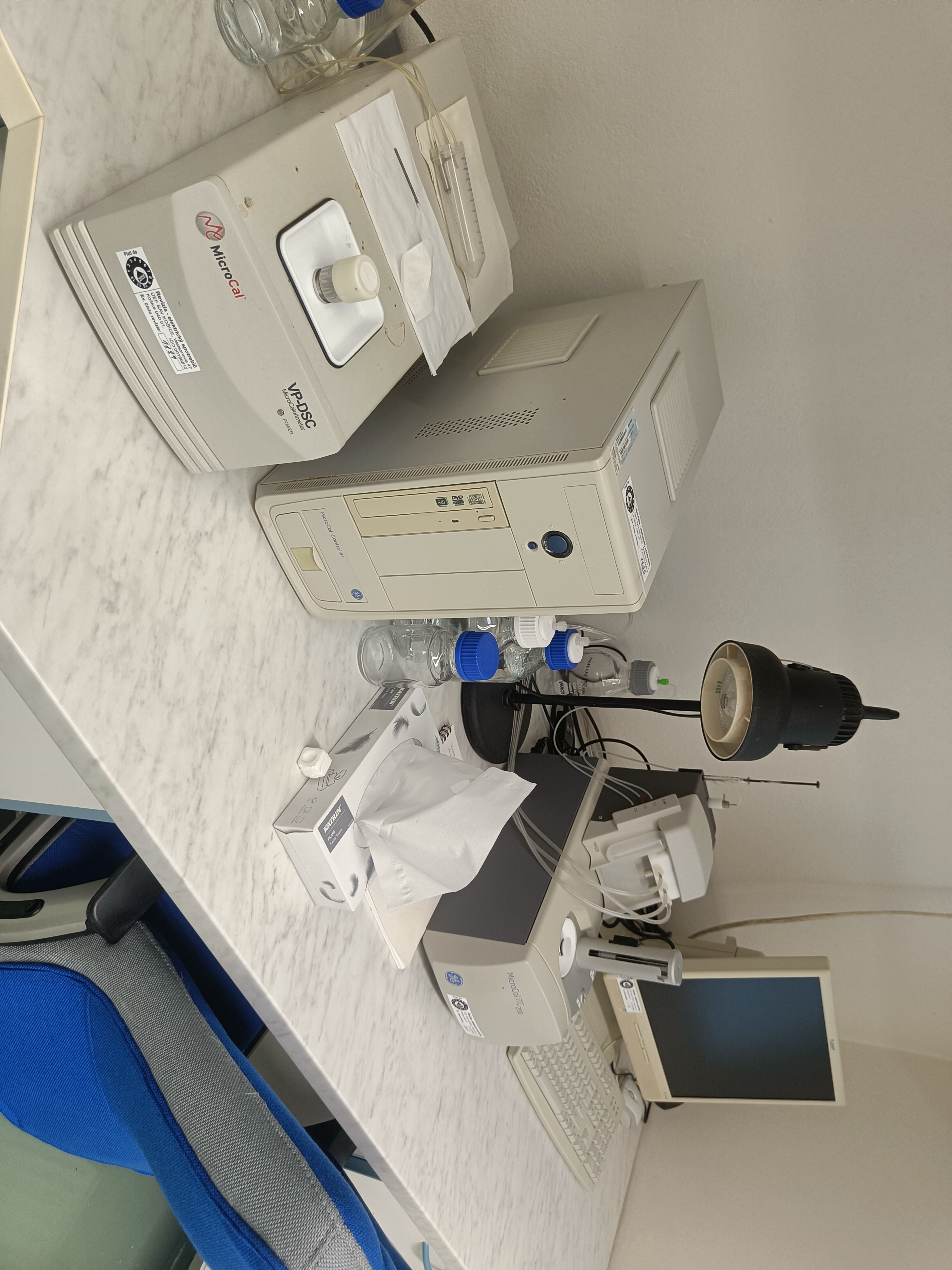



Infrared spectroscopy, an analytical method, is widely used to observe the vibrations of chemical bonds. Fourier Transform Infrared (FT-IR) Spectroscopy is a highly sensitive and precise method that uses the mathematical Fourier transformation analysis to process raw data. The information gained from the FT-IR spectrometer can be used to quantify components of the secondary structure of proteins or samples in a different state, such as bulk samples, powders, liquids, or thin films. Attenuated total reflection (ATR) mode is available. The reason for the ubiquitous use of ATR is that it enables solids and liquid samples to be neatly analyzed – simplifying the measurement of virtually all substances.
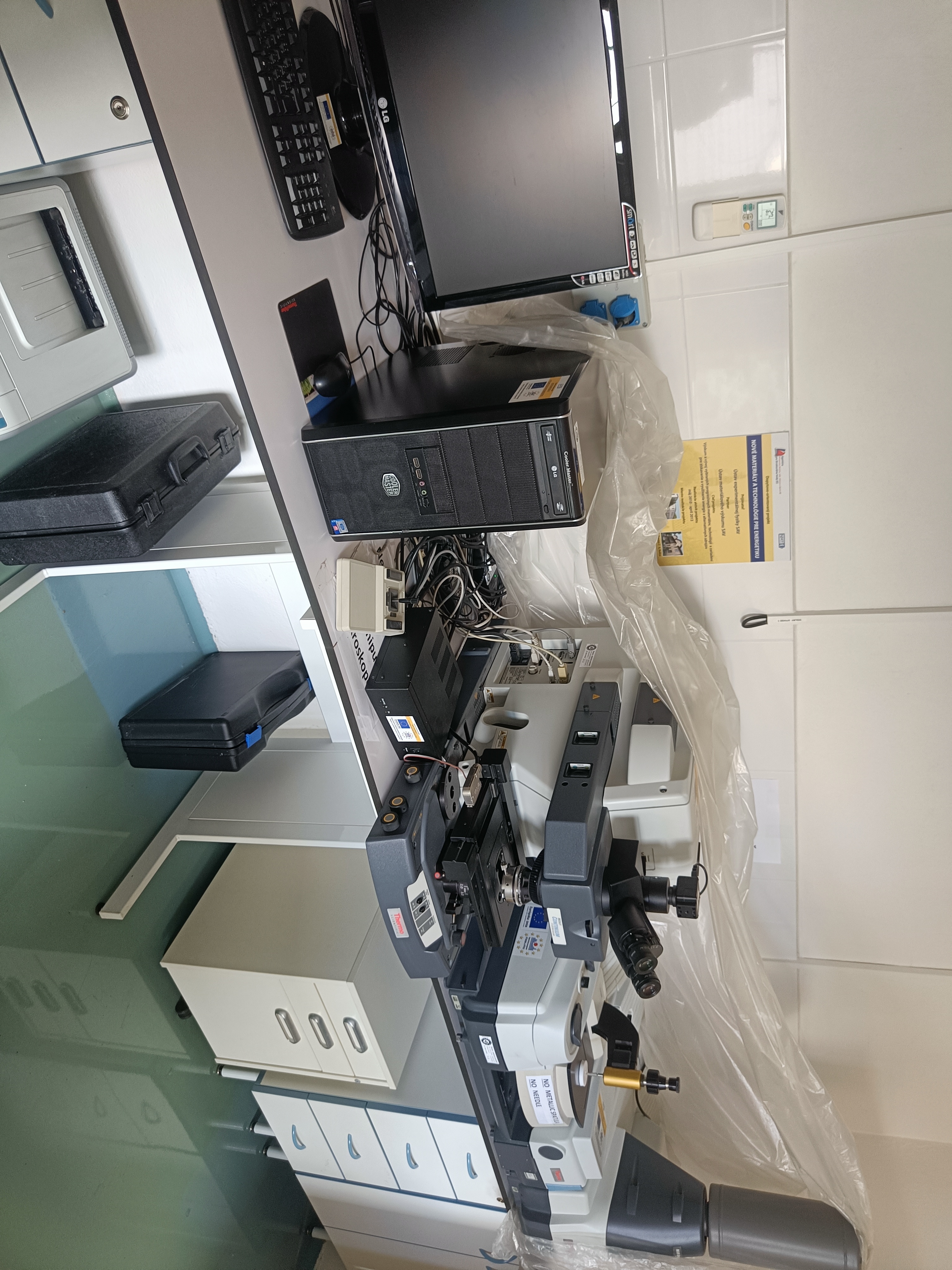

Morphology of various samples, especially amyloid protein aggregates, is crucial for a better understanding of the behavior of these samples. Atomic force microscopy that allow surface scanning of samples with high resolution in contact, tapping and hybrid modes. Except for imaging/visualizing various samples like proteins, nanoparticles, small molecules, etc., we can also measure other physical characteristics, such as force-distance curves. The NTEGRA II is an advanced model offering high precision and resolution with 40 measurement methods. It is capable of performing detailed analyses on both hard and soft samples, including the determination of the Young's modulus. DriveAFM further increases AFM application potential offering ability to scan samples in liquid, i.e. live cells.
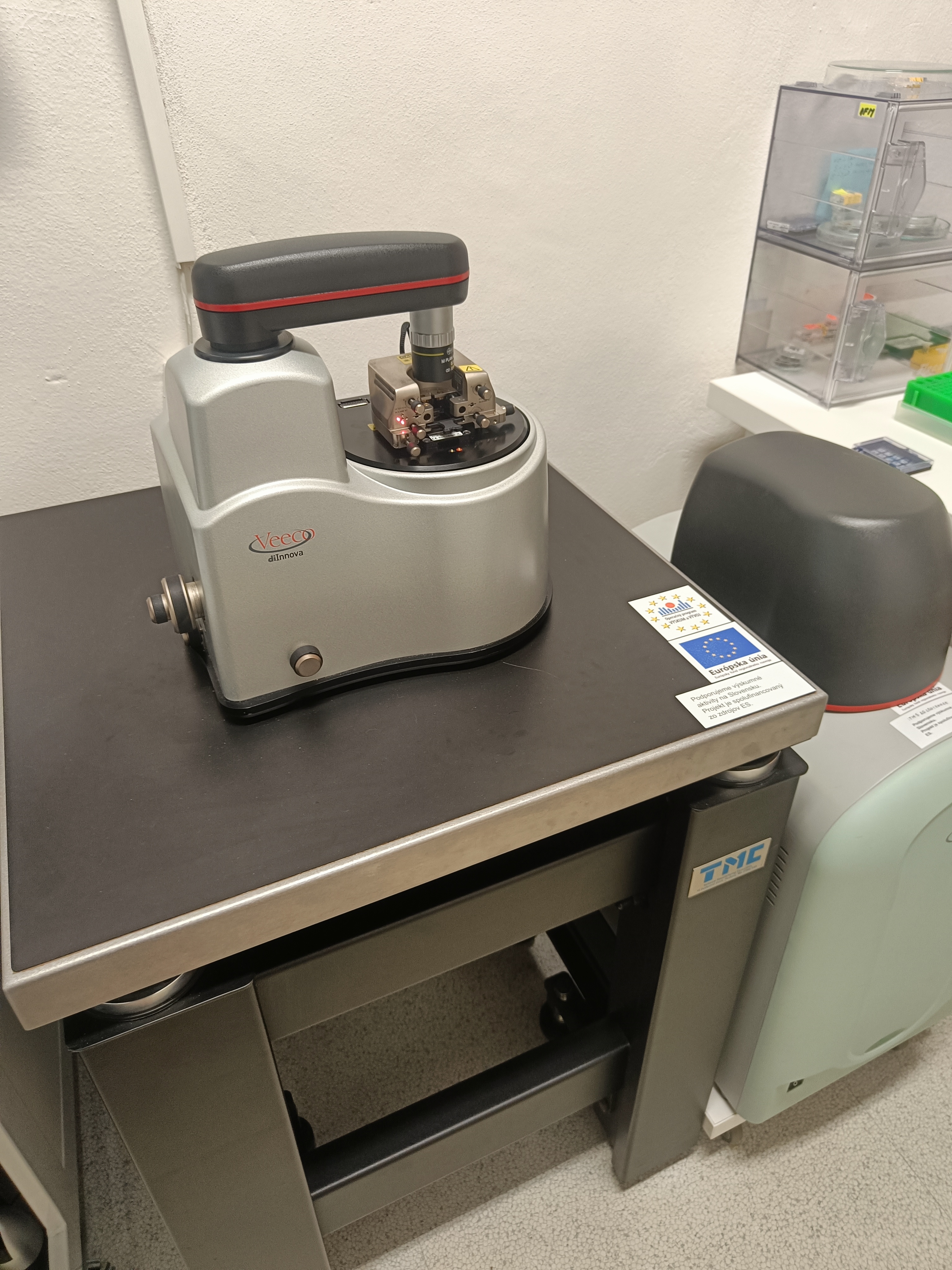
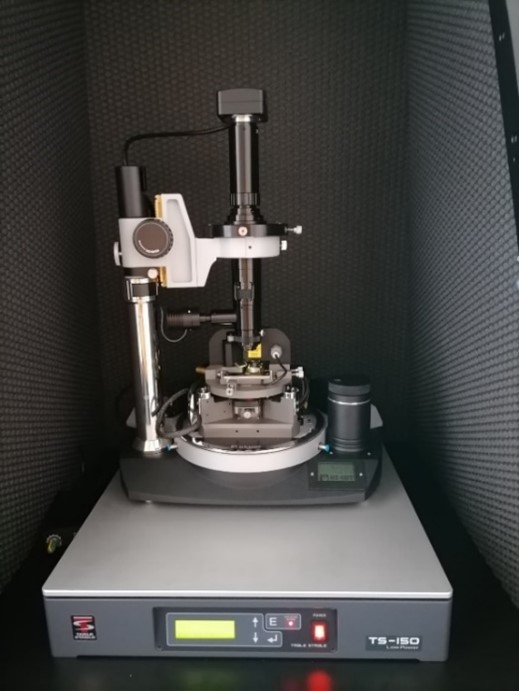




In research dealing with proteins, it is essential to own FPLC to be able to produce and purify proteins. ÄKTA Avant is a fast and highly automated chromatography system that provides an efficient purification system for various proteins. It is also suitable for media screening and method optimization. UNICORN 6 software connected to the FPLC system was developed to increase the efficiency and productivity of separation. The flexibility of FPLC allows users to choose a type of chromatography, small or large-scale columns, and different experimental methods to separate components of a sample.


JASCO V-630 and JASCO V-750 UV-VIS spectrometers are routinely used to observe samples' absorbance in the ultraviolet or near-visible spectrum. Except for light absorbance, JASCO V-750 can also be used for transmittance or reflectance measurements in the UV-visible region, including liquids, solids, and specular, absolute, and diffuse reflectance options. The other advantage of these models is the temperature control system and kinetic measurements. The absorbance, transmittance, and reflectance can be measured over a specified time at a fixed wavelength. MicroCal-VP-DSC is another type of calorimetry able to measure thermodynamic parameters (melting temperature, enthalpy, entropy, Gibbs free energy, heat capacity) to characterize stability and dynamics of conformational transitions of proteins, nucleic acids, lipids, and its complexes in solutions.
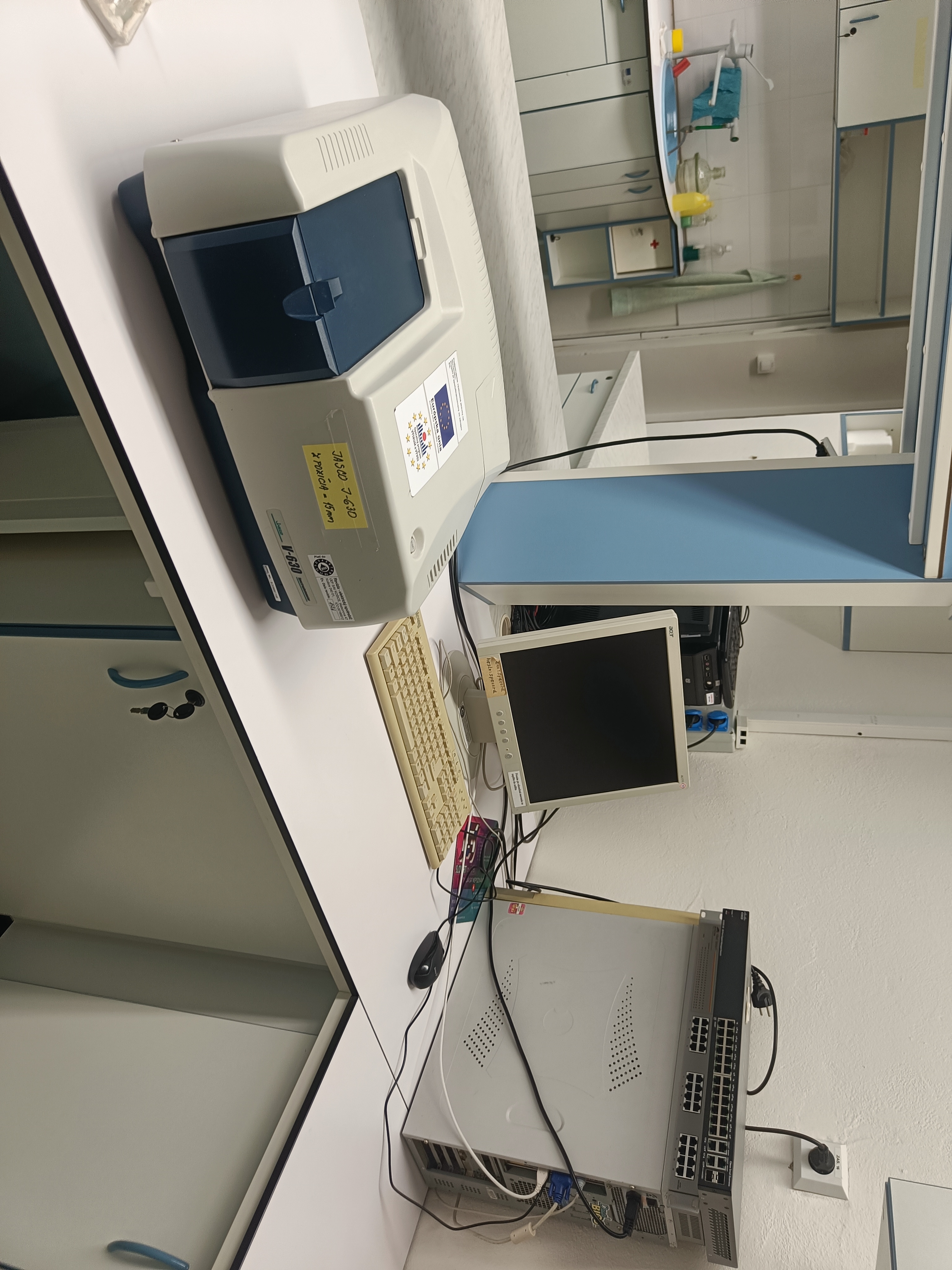
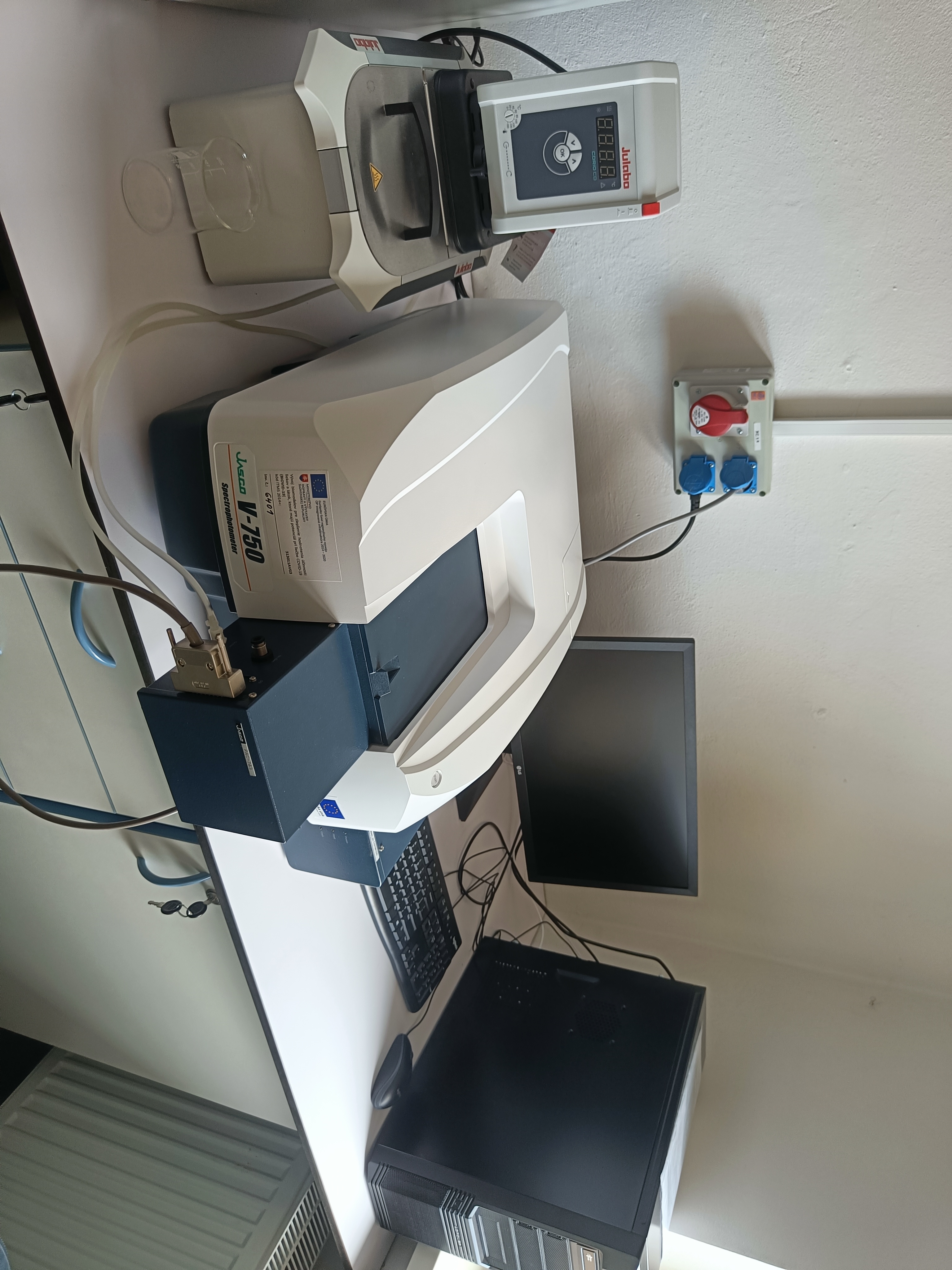


Tensiometry is a method to observe different properties of liquids and surfaces. Various properties can be measured, for instance, surface free energy, surface- and interfacial tension, roll-off angle, or batch contact angle using static or dynamic contact angle modes. Measurement of surface tension determines surface activities of protein on phase interfaces.
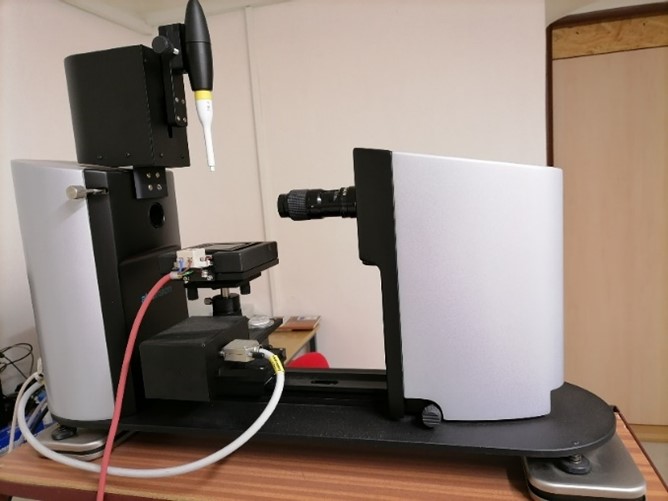

Surface plasmon resonance is a handy tool for interaction studies. Biomacromolecules' (proteins, nucleic acids, lipids, antibodies) interactions among each other or with another small molecule can be characterized by binding constants obtained from SPR measurements. Other biological processes can also be observed, such as the number of binding sites on the biomacromolecule's surface, enzymatic kinetics, the influence of structural changes on binding mechanism etc.
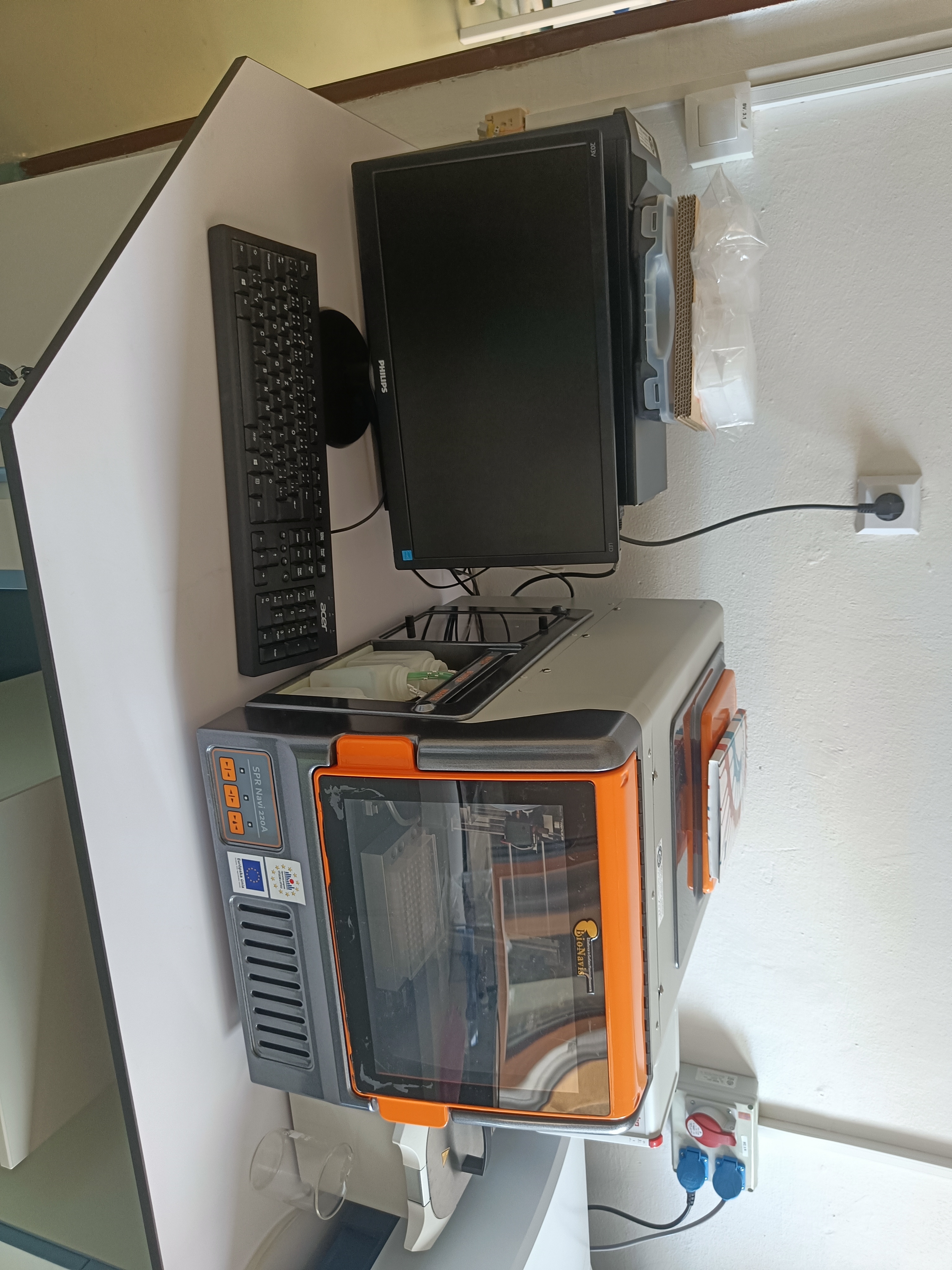

Ultracentrifuge SORVALL MX 150+ is a high-performance ultracentrifuge with a low noise level and performance up to 1 048 000 g. The centrifuge is suitable for separating viruses, cellular organelles, lipoproteins, nanoparticles, and nucleic acids.
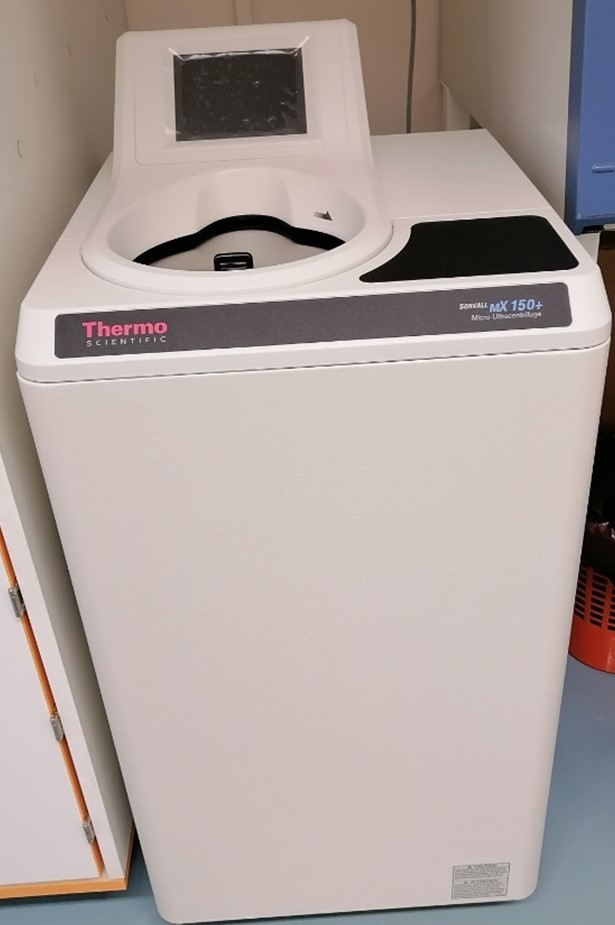

Small, but fully equipped cell-lab for routine cell experiments - WST, LDH assays etc. Includes two clean-benches, hood, sterile water bath, optical and fluorescence microscopes, CO2 incubators, multiple refrigerated centrifuges and more.




The ECLIPSE Ti2 inverted microscope delivers an unparalleled 25mm field of view maximizing the sensor area of large-format CMOS cameras significantly improving data throughput. The Ti2's exceptionally stable, drift-free platform is designed to meet the demands of super-resolution imaging while its unique hardware-triggering capabilities enhance even the most challenging, high-speed imaging applications.
